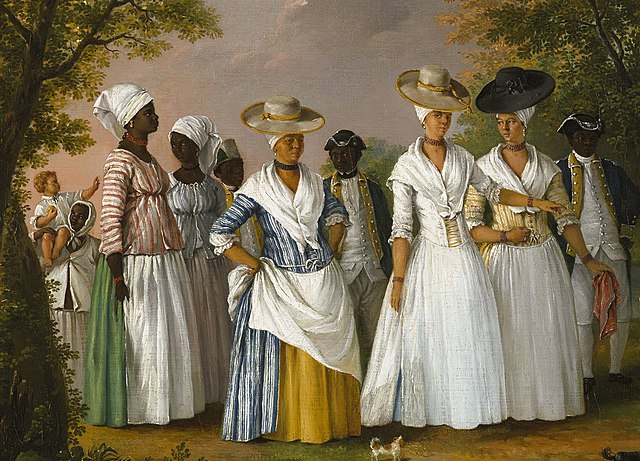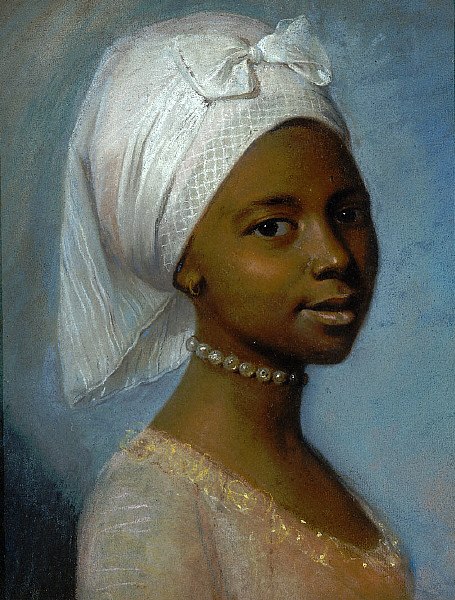In the context of the history of slavery in the Americas, free people of color were primarily people of mixed African, European, and Native American descent who were not enslaved. However, the term also applied to people born free who were primarily of black African descent with little mixture. They were a distinct group of free people of color in the French colonies, including Louisiana and in settlements on Caribbean islands, such as Saint-Domingue (Haiti), St. Lucia, Dominica, Guadeloupe, and Martinique. In these territories and major cities, particularly New Orleans, and those cities held by the Spanish, a substantial third class of primarily mixed-race, free people developed. These colonial societies classified mixed-race people in a variety of ways, generally related to visible features and to the proportion of African ancestry. Racial classifications were numerous in Latin America.

Free Women of Color with their Children and Servants, oil painting by Agostino Brunias, Dominica, c. 1764–1796.
Free woman of color with quadroon daughter. Late 18th-century collage painting, New Orleans.
Free West Indian Dominicans, c. 1770
Louisiana Creoles are a Louisiana French ethnic group descended from the inhabitants of colonial Louisiana before it became a part of the United States during the period of both French and Spanish rule. They share cultural ties such as the traditional use of the French, Spanish, and Creole languages and predominant practice of Catholicism.
Image: Portrait of a Black Man by Julien Hudson 1835
Image: Marianne Celeste Dragon
Image: Portrait of Matias Francisco Alpuente y Ruiz by José Francisco Xavier de Salazar y Mendoza
Image: Jean Etienne Liotard Portrait of a Young Woman







